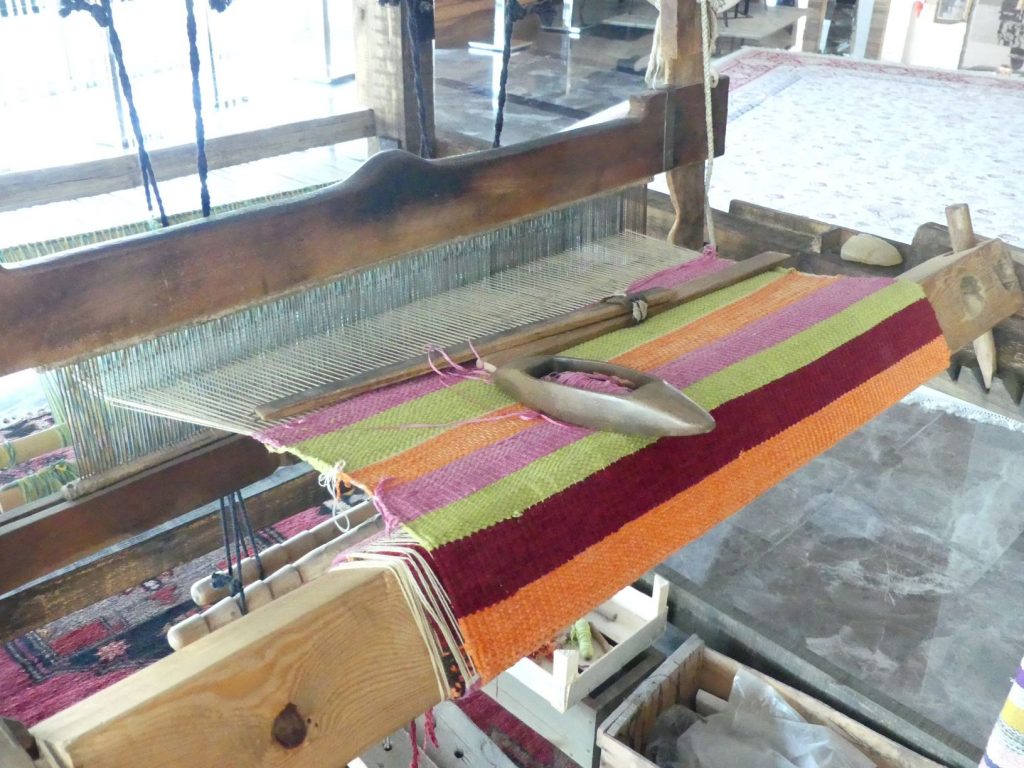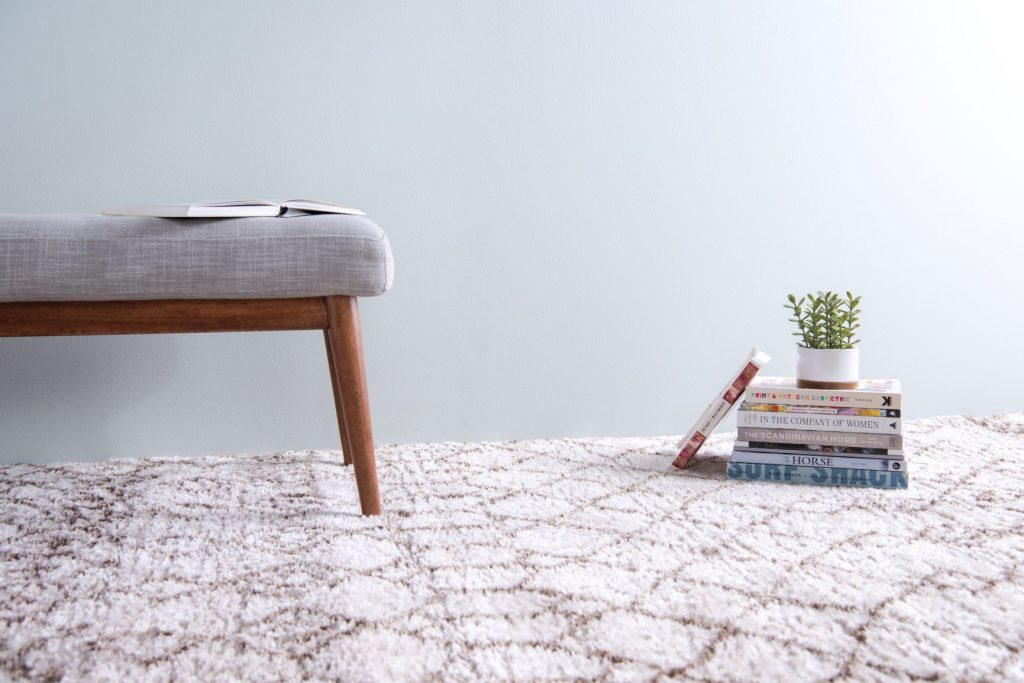Rugs are an essential part of any home. It used to be that buying rugs meant going to a dealer and lugging it home. Today, it’s easier than ever to buy rugs online. A great area rug will not only go a long way in bringing visual cohesion to your décor but will also serve the practical purpose of bringing comfort to the room and dampening sound. Anyone who has ever lived in an apartment with noisy neighbors can tell you how important the latter is. The multipurpose nature of area rugs means there are a lot of questions to be asked and considerations to be taken in order to ensure you purchase the perfect one for your space.
It’s important to find a rug that not only fits your style but also your lifestyle, and with so many sizes, styles, and materials available it’s not always clear what that means. To help get you started, we’ve put together a list of the most important questions you should ask when you buy rugs online.
What room am I buying the rug for?
The first thing you need to do is figure out what room you’ll be putting the rug in and, more specifically, how you use that room. Is there a lot of foot traffic? Is there a chance there will be spills to be cleaned up? There are other considerations we’ll cover later in the guide, but speaking broadly, you want to find where the needs of your room fall on the spectrum between comfort and durability. Dining rooms, for example, tend to have a lot of foot traffic and there’s a good chance food will eventually fall on the rug, so it’s important to get a durable, easily cleaned rug. Bedrooms, on the other hand, are lower-traffic areas where comfort is king, so you can get away with something plush.
Our guide on how to choose a rug for every room goes into more specifics and has advice on rug placement too!
How big does the rug need to be?
The short answer to this question is: probably bigger than you think. Thanks to a bit of visual trickery, a large rug will tend to make a room look larger as well. On the other hand, a rug that’s too small can cause the room to look awkward and off-balance. The typical advice is to leave an 18 to 24-inch border of visible flooring around the edges of your rug. If you’re concerned a large rug will cover too much of your beautiful hardwoods, don’t be! The contrast between the large rug and visible floors will draw the eye and help the flooring stand out. When you buy rugs online, it’s a good idea to measure out the space beforehand so you won’t be surprised once it arrives.
Of course, these tips are only scratching the surface when it comes to rug sizing. For more details, check out our comprehensive rug size guide.
What kind of design does the rug have?
Most rug designs can be described as either traditional, modern, or transitional. Which of those you choose is entirely dependent on your own tastes and the style of your décor.
- Traditional rug designs usually take inspiration from handmade Persian rugs. Large medallions, intricate borders, and floral patterns are common fixtures in traditional rugs.
- Modern and contemporary rugs, on the other hand tend to be a little further outside the box. Asymmetric or abstract designs and bold geometric patterns are the bread and butter of modern rugs.
- “Transitional” describes designs that fit somewhere between the two. Many transitional rugs use simplified versions of traditional patterns like trellises or use traditional motifs like medallions asymmetrically.
Typically, people will match their rug to their décor. For example, a traditional rug in a formal dining room under a large, dark-finish table is a classic, sophisticated look. Likewise, a bold contemporary rug can be the perfect companion to modern décor. All that being said, don’t be afraid to mix it up! Using distressed traditional rugs with modern furniture is a big part of the very trendy boho chic aesthetic. Contrasting formal patterns with minimalist furniture makes for an extremely striking look. If you’re not ready to do something that dramatic, transitional rugs are perfect for you. Existing between traditional and modern rugs, transitional rugs are chameleons of design, able to fit into any aesthetic.
What style is the rug, and how is it made?
It’s easy to get overwhelmed by the sheer variety of rugs on the market. We have a full guide on all the most common rug materials and weaves, but to make it simple most rugs can be sorted into one of two categories—handmade and machine-made. There’s enough to say about handmade rugs, including Persian and Oriental rugs, to merit an entire series, so for now, we’ll focus on machine-made rugs, which make up most rugs sold today.

While they can be found in many different materials, most machine-made indoor rugs have a jute or cotton backing and a polypropylene pile. This synthetic fiber is extremely versatile, and able to closely approximate much more expensive materials like wool.
Your primary decision to make when it comes to machine-made rugs will be the pile length. The general wisdom is that while high-pile and shag rugs are softer and plusher, they tend to be harder to clean. Meanwhile, low-pile rugs are a bit easier to clean and better suited for high-traffic areas. Think about how you use the room, how heavy the traffic will be, and how often you expect to clean, then choose a pile length to match. You won’t be able to feel the rug before you buy when purchasing rugs online, so you may also want to seek out similar rugs in your local area to get a better idea of it in person.
How will I take care of the rug?
The final thing you’ll need to consider is how you’ll keep your new rug looking new. Luckily, most rugs can be easily maintained with regular vacuuming and a semi-annual rotation to even out wear. When the inevitable spill does happen, don’t panic! Act quickly with a stain-removal solution like Rugs.com’s Uni-Cleaner and follow all the instructions on the label and you should have no problem.
There are some special considerations you should take depending on the material of the rug. Jute, for example, should be kept as dry as possible. Check out our complete guide on rug care and cleaning for more details as well as step-by-step instructions on deep cleaning rugs when they really need it.
Now we have a question for you—How do you buy rugs online?
While these questions will get you started, they’re only scratching the surface when it comes to rug knowledge. How do you make your rug buying decisions? Let us know in the comments what you look out for and what questions you ask. We’ll be adding our favorites to the list! Then, check out the collection on Rugs.com to find the perfect new rug for your home.


When will my rugs arrive?
Hi Carolyn,
Our rugs typically arrive within 2-5 business days. You should have also received tracking information in your email!